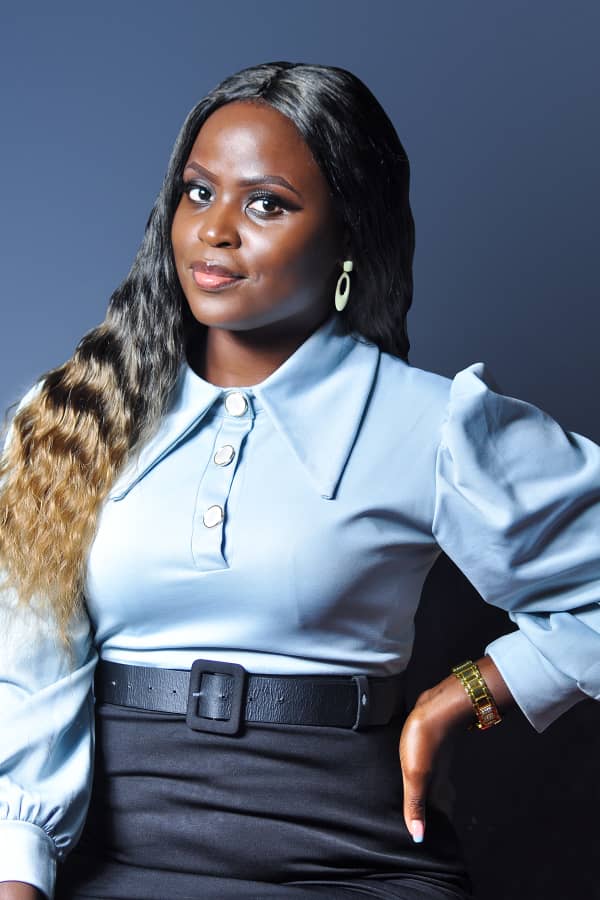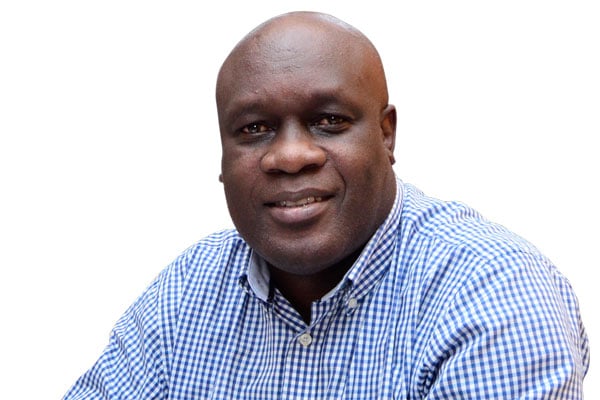
A man fills in a newspaper crossword puzzle. PHOTO/PROMISE TWINAMUKYE
“I have been filling in crossword puzzles since I was 13 years old. My best has always been crossword puzzles that I would check for in the newspapers. I would then keep the filled in puzzles and compare the answers in the next day’s newspaper which would give me joy knowing that I could master some words.
Since I was brilliant, I made sure to keep learning new words from the puzzles,” says Ruth Nakayima, a communications officer.
She adds, “Later in life I became curious with jigsaw puzzles which I found solution-oriented. These kept me keen, looking out for hints on images to create a full picture. As a child, I did it just for fun. I have realised it is a stress reliever and it keeps me motivated. It is also a bonding activity I get to do with my friends. The puzzles also challenge my intellect and make me creative with my work and everyday life. They also help me create some time for meditation.”
Like Nakayima, there are many others who enjoy filling in a puzzle every now and then, for different reasons.
Dr Vincent Karuhanga, who revealed he usually picks out his puzzles from the newspapers, says they can help one in countering dementia. He adds that, lately many young people are prone to the disease, according to studies that investigate mental exercises to be cognitively-stimulating or brain-challenging activities.
A study published in Neurology in 2021 found that, “ high levels of cognitive activity, such as reading, playing games such as checkers and puzzles, and writing letters, can delay the onset of Alzheimer’s disease by five years among those aged 80 years and above.”
As trauma therapist Olivia James told Wired in 2021, “Focusing such that your mind is occupied but not excessively challenged is incredibly helpful for people with depression, anxiety, and stress” as the activity offers “a little holiday from yourself.”
More studies have shown that cognitively passive activities such as watching TV are linked to increased dementia risk whereas cognitively active tasks such as using the computer reduced the risk of dementia.
History
This begs the question as to when the first puzzles were made. According to www.puzzlewarehouse.com, jigsaw puzzles go back to as early as the 1760s. These brain teasers took shape at a time when European map makers pasted maps on wood cuttings that were dissected to create educational, but fun or playful materials and teach children about geography. Given that they are child-friendly, the jigsaw puzzles have evolved over time to include recognised objects such as animals, super heroes and birds.
According to an article in Time magazine, titled Crosswords Have Always Been a Solace in Times of Trouble, crossword puzzles have always come in handy in stressful times as not just a diversion but a necessary solace. The word game that was birthed in December 1913 on the eve of World War I was the first of its kind published in the New York World newspaper by Arthur Wynne. Wynne needed a new game for that paper’s fun section and so he came up with what eventually came to be known as the crossword puzzle.
Wynne’s invention has, since then, been taken up by the world of gamers with competitions, tournaments, and clubs as well as crossword books.
Puzzles have grown popular over centuries not just because they are associated to cognitive wellbeing but also because they help end users find a space to solve challenges.
Today, these brain teasers have taken over the web with massive monthly online visits. According to a study done by crosswordanswers911, a website focusing on puzzles, The New York Times garnered 14.2 billion online visits from the puzzle game Wordle between January 2022 and November 2023. Other top news media websites, such as The Washington Post, USA Today, The Guardian, and six others, collectively account for more than 20 million game visits during the same period as well.
Wordle, which is an online video game, involves users guessing a five-letter hidden word in a grid format of boxes and enables one to share their performance daily. The game, and two others Connections, and Crossword emerged as the top three word/puzzle games among these news sites fetching 423.7 million, 152.7 million, and 117.8 million visits online, respectively. Connections is a word puzzle similar to Wordle with more grids and involves finding words in groups of fours with something in common.
Worldwide, the top three online puzzles going by search visits are Wordle with 127.1 million monthly searches; Quordle which offers users a greater challenge with about 8.3 million searches; and Sudoku, a popular game which attracts about 5.1 million searches.
Other word games on the list of the games with top searches monthly include Heardle, Octordle, Globe, Nerdle, Waffle, Spelling bee, Crossword, and Scrabble.
Creativity
The art behind developing a user-friendly online puzzle needs more than a creative’s ideology; it needs a tireless effort to ensure that the word game is aligned to the expectations of the end users.
Peter Nkobwa, an App developer at Miles of Smiles Foundation, says an online puzzle game should be able to determine its purpose (such as identifying problems or solving an equation) and who will be interested in doing it. He adds that such a well-defined purpose ensures that the puzzle delivers value to a specific target audience.

A man fills in an online puzzle. PHOTO/PROMISE TWINAMUKYE
Andrew Kajeke, also an app developer, at Akhan Innovates, says any creative or software developer should focus on the end user for any word game or application.
“While the word game meets the intended objective, it should also be able to trigger people to think and still entertain,” he advises. This is why, he says, games such as chess and drafts are designed to entertain and cause one to think fast.
He also notes, “While designing an online puzzle, the harder the game is to the human brain, the more one is intrigued to think and this builds the resilience of users because a hard game triggers you to try again and task your mind.” He advises however that a game should not overwhelm users with complex designs or excessive content.
Benefits
Enid Mirembe says she has been obsessed with puzzles from as early as the age of eight.
“I got interested in puzzles after my English teacher convinced me that I would get to learn new words,” she recounts. She therefore started looking out for puzzles from newspapers, magazines and children sections of the paper.
“I would, however, fail to get the next day’s papers with the answers of the previous day, which left me wondering if I passed or failed,” she recalls.
Research shows that these brain games are challenging yet fun-filled and also add an educational twist in usage. They also make it easy for users by proving hints and also serve diverse audiences depending on their preferences.
So, if you have never tried to fill a puzzle, you might want to try one and engage your brain, learn more and join the fraternity of puzzle fillers.
Puzzle lovers and their preferences
Kanda Dedi, Production manager: I love jigsaws and detective mystery puzzles. For instance, I read one on a man found hanging but there is nothing to prove it is a suicide except a puddle of water on the ground. The man is hanging with nothing to show how he could have climbed up and the answer was: he was standing on a block of ice. That is real mystery. I also enjoy newspaper word puzzles for mental gymnastics. I have been doing this from the age of eight. I travel with puzzle books to fill in on a journey.
Viola A. Namukasa, Entrepreneur: I have been playing crossword puzzles for more than 10 years . I get copies from newspapers and online. I enjoy them because they stimulate my brain to think and broaden my knowledge on different words. I also play them for fun and therapy. Every time I get the words right, I feel like a genius and this also helps to boost my confidence and self-esteem. My biggest challenge has been failing to figure out the right words but I ensure to look up the answers in newspapers or online.
Moses Majjode, Teacher: It is now two years since I started filling in puzzles. As a mathematics teacher, I enjoy the Sudoku puzzles, which I find challenging. I also find them interesting because they sharpen my brain as I try to compute the figures. I have tried word puzzles in the Daily Monitor before but found them difficult because they require a lot of literature. The challenge I usually face while filling in puzzles is that I miss out on the copies in the coming weeks and fail to get corrections.
Winfred Nyapendi, Communication specialist: GAs a child, jigsaw puzzles thrilled me. Assembling small interlocking pieces excited me. In Primary Five, I discovered crossword puzzles. This tripled my excitement and, I vowed to never stop filling puzzles. Even today, I enjoy solving jigsaw puzzles with my nieces and nephews. I have taught them and we compete. Crossword puzzles reinforced my knowledge and learning. They teach patience, perseverance, and problem-solving skills.
Mariam Nassejje , Teacher: I prefer mathematical puzzles. I love them because I am a Maths geek of sorts. They help me relax and think because I teach Maths and Physics subjects. I just love figures generally. I do the crosswords too but I am not as passionate about them as I am for the numeral puzzles. I fill in crosswords to improve my vocabulary, I have school - going children and I am able to learn new words to help them with their homework.
Additional reporting by Esther Bridget Nakalya

